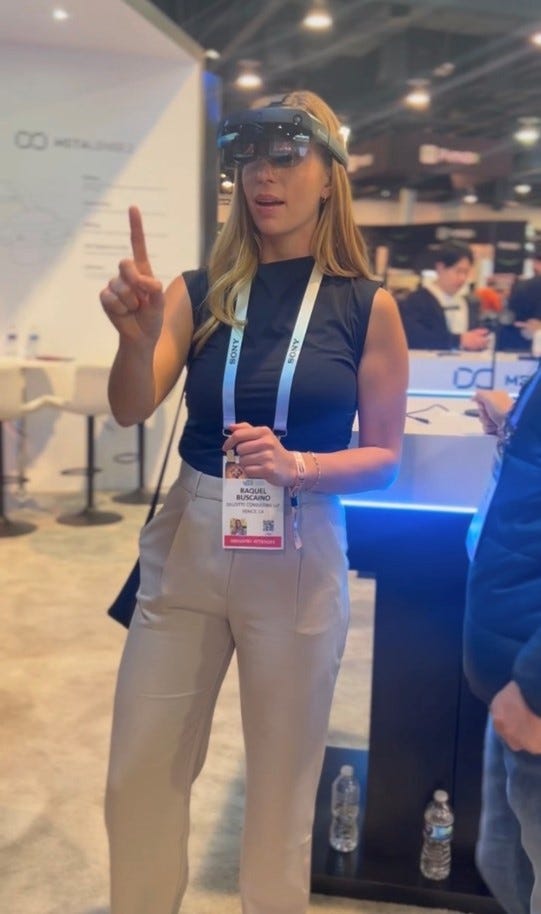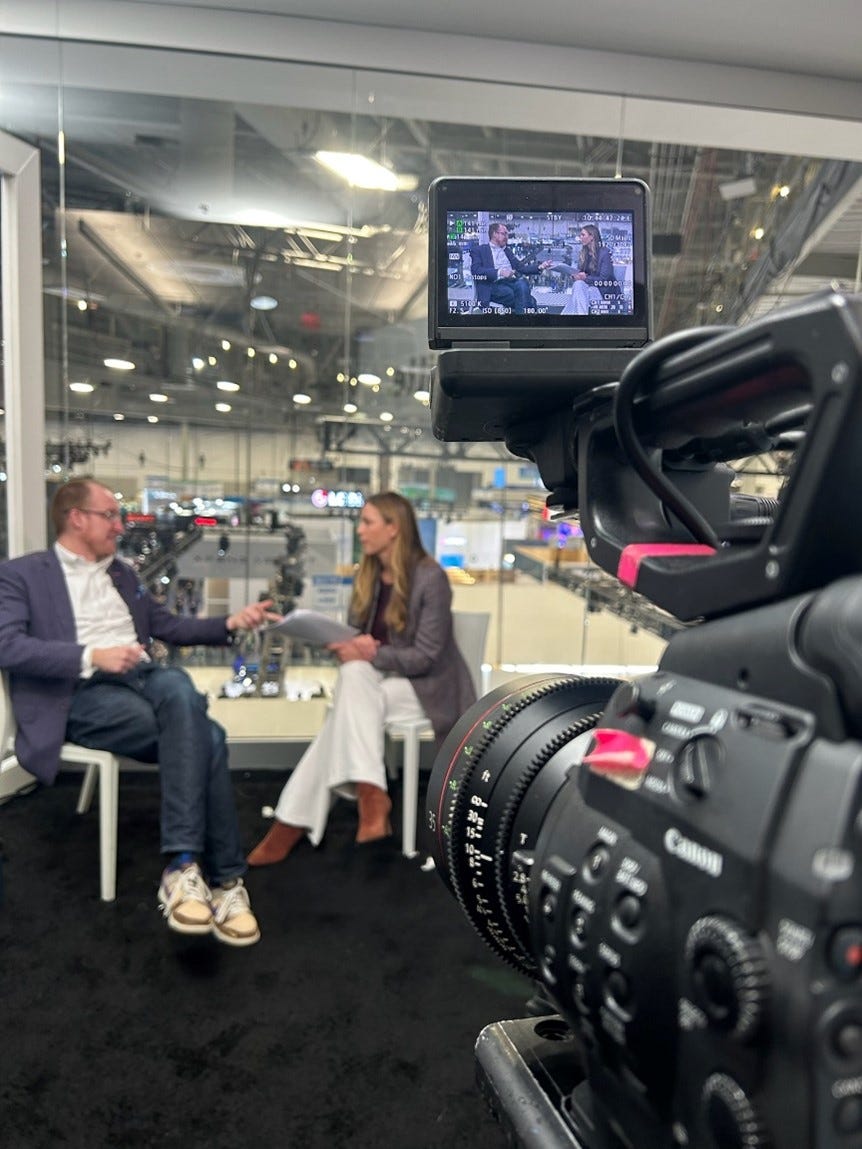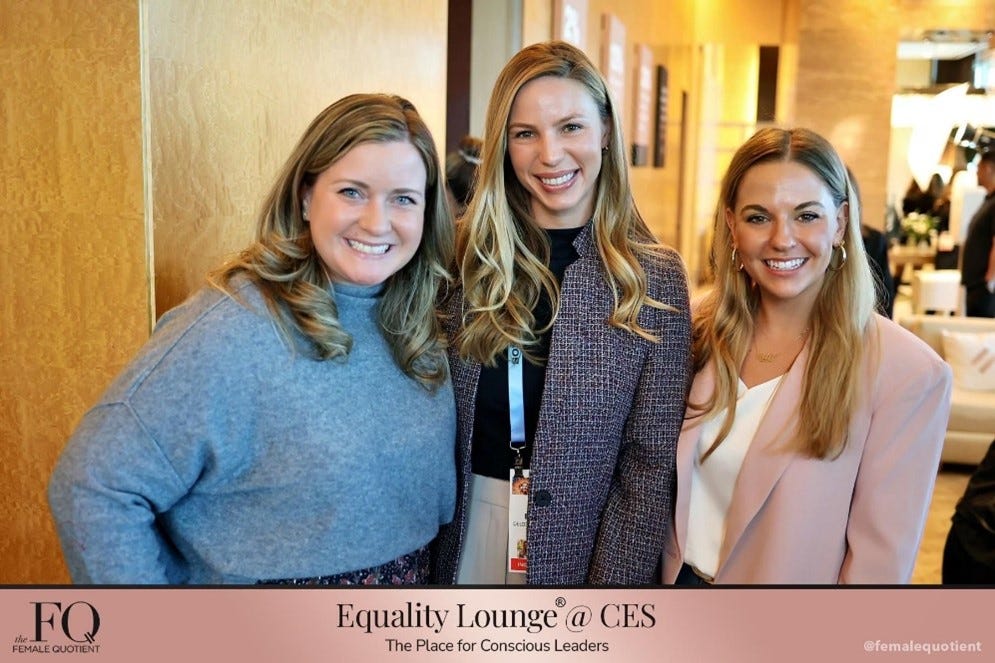CES 2024 Postcard: Finding the Shiny Nickel
Every January, tech enthusiasts and gadget gurus from around the world flock to Las Vegas for the Consumer Electronics Show (CES). The energy in the air is unique, equal parts “kids in a candy shop” and “holy smokes the future is here.” It’s not just another tech expo, it’s the tech expo – and for good reason.
Since CES’s humble beginnings in 1967, it’s become the darling tech debut for countless technologies. From the premiere of the VCR in 1970 and the introduction of the CD player in 1981, to gaming consoles in the early 2000s and VR devices in 2013, CES proudly wears its crown as queen of the conferences.
And while CES has retained its same name over the years, I have to imagine it’s only because the title “Consumer (and Business) Electronics (and Technology More Broadly) Show (and Industry Conference)” loses in heft what it makes up for in accuracy.
In fact, the conference has ballooned to cover nearly every industry and technology category, with 130,000 attendees, 4,000 exhibitors, and 1,200 startups this year, all eager to share their perspective on what’s new and next in tech. Doing some quick math*, it’d take me over 33 days alone to briefly interact with each exhibitor. And let’s just say that would be 31 more days than I’d ideally spend in Vegas at any one consecutive time.
So, what ends up happening is that, instead of finding a sense of the whole at CES, we end up being enamored by the shiniest objects. And don’t get me wrong, those shiny new objects are really shiny. Like, really shiny. Flying cars, jetpacks, and robots that can whip up espresso martinis with just the exact Kahlua to coffee ratio you prefer.
But most of the show floor isn’t that shiny. It’s still got a little shine, but in a different way, almost like a nickel spotted on the ground: Shiny enough to catch your attention, common enough to know it’s not a scam, and practical enough to where you could actually benefit from using it.
That’s the part of CES that I like – being able to recognize the shiny nickels that will inform our preferred tomorrows in quieter ways. Here’s some of the themes I gleaned from a collection of those nickels:
1. AI (Expectedly) Everywhere: Shocker, I know.
To list the headlining companies and list of exhibitors who touted “AI-enabled [insert device here]” would be to recite the dictionary. But in conversations, I was actually pleasantly surprised by how much focus was spent on the product itself, and how for most products, AI seemed to show up as the supporting sidekick – the underlying tech enabler.
When I reflect on CES 2024 in future years, I believe I will think of it as a transition point in AI – one where AI has turned from anticipation to expectation. After the whirlwind anticipations of 2023, AI has lost a bit of its “wow” factor because I now have the expectation that it will be incorporated into everything we do. Whereas in past years I would applaud AI-enabled devices for being “smart,” I think I’m now simply more inclined to call non-AI-enabled devices “dumb”. Smart is now the expectation.
2. Spatial Wars: Many headsets will enter, only one will win *queue thunderdome music*
Whether it was glasses, headsets, or the chips that will power them, extended reality products (XR) took center stage at CES. Whereas prior years of “metaverse hype” largely resulted from one company changing its name, this current surge feels fueled by numerous incumbent and startup players alike entering the scene with full force.
I think that 2024 will serve as a pivotal year for XR. I think we’ll see the emergence of a more competitive ecosystem (which should increase adoption), a more robust pipeline of spatial content and apps (which should increase the value to consumers and businesses), and a greater expansion into entertainment and industrial use cases (as opposed to just gaming).
As someone who’s owned two VR headsets (one of which was devastatingly fried by sun exposure…), I feel like I’ve been waiting in the wings for more immersive tech to enter mainstream life. If I’m tracking where the breadcrumbs from CES are leading me, it’s to a world where augmented, mixed, and virtual reality become a bit more mainstream – for consumers and businesses alike.
Photo taken somewhere between the 8th and 12th XR demo
3. It’s What You Wear: Data at your (/on your) fingertips
Whether it’s headsets, earphones, watches, rings, pocket monitors, belts, or glasses, one thing was made clear at CES: What you wear is getting an upgrade. I think the “rise of AI” is playing a critical role in the wearables space. In the past, I might wear a watch that collects endless data but I’d be left with no way to interpret that data, save for a few key metrics pre-determined by the device. Those days are long gone, and I think we’re just at the tip of what will be possible in the wearables space.
I imagine—and expect, to some degree—a future in which my wearable devices are able to collect seemingly infinite data points, where AI can determine both generic and niche health insights from that data, and where I can receive those insights in a highly personalized way.
We’re starting to get unprecedented agency and information when it comes to handling our health, and I’m here for it.
Recording a live TECHTalks podcast from CES. Not featured: the flying car prototype two booths to the left.
Shameless Plug
If you’d like to dive deeper on the above insights, check out our latest TECHTalks podcast episode. Filmed live from the CES show floor, I interview Deloitte’s global CTO Bill Briggs about our 2024 tech trends, and how we’re seeing those trends show up on the show floor. Available on Spotify or Apple Podcasts.
One Final Thought
Often times I think we believe the future happens to us, as if it’s something that we receive. But I don’t think that’s it at all. I think it’s something we collectively create, whether we realize it or not.
For all that CES is (and trust me, it is many things), it is still just a snapshot in time. It is 3 days of 365, a reference marker most akin to technology’s annual birthday. But it is the enduring work that we get to do the other 362 days of the year that fills my cup even more.
I look forward to building that future with you all, today and every day.
With Kelly Raskovich and Bri Henley at the Equality Lounge. Grateful for all the Deloitte representation in creating a more inclusive tech culture.
- Raquel Buscaino | Deloitte US NExT Leader
*Calculation is based on 4,000 exhibitors, 10 working hours in a day, and an average time of 5 minutes per exhibitor:
- 1 minute to exchange formalities (e.g., “The weather is nice”)
- 3.5 minutes to understand their product
- 0.5 minutes to decide whether to take the free pen, and/or the free sticker









